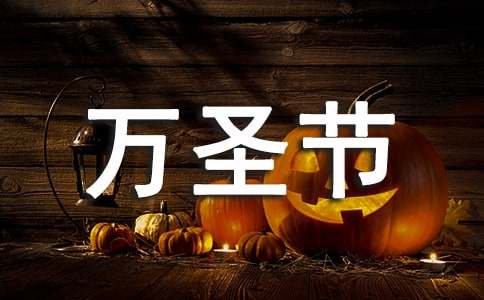- 相关推荐
万圣节的资料英文版
相信大家都听说过万圣节,也会在万圣节这天举办一些活动,但是大家知道万圣节是怎么来的吗?下面就由yjbys小编跟大家介绍一下万圣节的发展吧!

【万圣节的发展】
As European immigrants came to America, they brought their varied Halloween customs with them. Because of the rigid Protestant belief systems that characterized early New England, celebration of Halloween in colonial times was extremely limited there.
It was much more common in Maryland and the southern colonies. As the beliefs and customs of different European ethnic groups, as well as the American Indians, meshed, a distinctly American version of Halloween began to emerge.
The first celebrations included "play parties," public events held to celebrate the harvest, where neighbors would share stories of the dead, tell each other's fortunes, dance, and sing.
Colonial Halloween festivities also featured the telling of ghost stories and mischief-making of all kinds. By the middle of the nineteenth century, annual autumn festivities were common, but Halloween was not yet celebrated everywhere in the country.
In the second half of the nineteenth century, America was flooded with new immigrants.
These new immigrants, especially the millions of Irish fleeing Ireland's potato famine of 1846, helped to popularize the celebration of Halloween nationally. Taking from Irish and English traditions, Americans began to dress up in costumes and go house to house asking for food or money, a practice that eventually became today's "trick-or-treat" tradition.
Young women believed that, on Halloween, they could divine the name or appearance of their future husband by doing tricks with yarn, apple parings, or mirrors.
In the late 1800s, there was a move in America to mold Halloween into a holiday more about community and neighborly get-togethers, than about ghosts, pranks, and witchcraft.
At the turn of the century, Halloween parties for both children and adults became the most common way to celebrate the day. Parties focused on games, foods of the season, and festive costumes. Parents were encouraged by newspapers and community leaders to take anything "frightening" or "grotesque" out of Halloween celebrations. Because of their efforts, Halloween lost most of its superstitious and religious overtones by the beginning of the twentieth century.
By the 1920s and 1930s, Halloween had become a secular, but community-centered holiday, with parades and town-wide parties as the featured entertainment. Despite the best efforts of many schools and communities, vandalism began to plague Halloween celebrations in many communities during this time.
By the 1950s, town leaders had successfully limited vandalism and Halloween had evolved into a holiday directed mainly at the young. Due to the high numbers of young children during the fifties baby boom, parties moved from town civic centers into the classroom or home, where they could be more easily accommodated.
Between 1920 and 1950, the centuries-old practice of trick-or-treating was also revived. Trick-or-treating was a relatively inexpensive way for an entire community to share the Halloween celebration. In theory, families could also prevent tricks being played on them by providing the neighborhood children with small treats.
A new American tradition was born, and it has continued to grow. Today, Americans spend an estimated $6.9 billion annually on Halloween, making it the country's second largest commercial holiday.
【万圣节的资料英文版】相关文章:
万圣节的起源英文版10-30
万圣节的简介英文版08-05
万圣节的习俗英文版05-20
万圣节的介绍英文版08-28
万圣节小报英文版08-30
万圣节的故事英文版08-04
万圣节的英语资料09-21
万圣节介绍中英文版06-24
关于万圣节的英语资料11-03
万圣节贺卡资料英文09-12